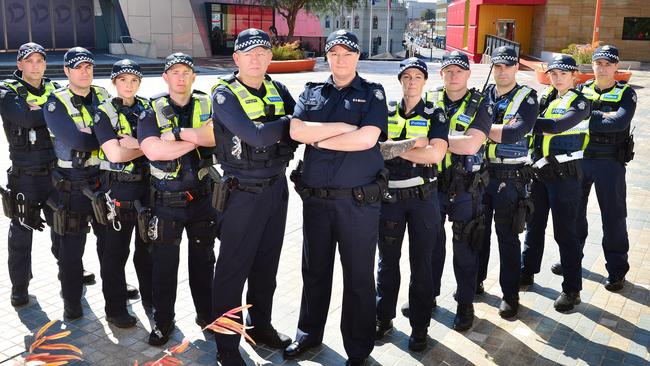Youth crime targeted in five-month police crackdown
Children as young as 12 face charges after a police crackdown in the wake of fights planned on Instagram and violent crime sprees. The major operation in Dandenong, Casey and Cardinia also revealed a worrying trend involving teenage girls.

Law & Order
Don't miss out on the headlines from Law & Order. Followed categories will be added to My News.
Children as young as 12 are among 396 youths facing almost 1000 charges in a new police crackdown on teen gangs, aggravated burglaries, violence and car thefts.
Police launched Operation Tidal across Melbourne’s southeastern suburbs in April and discovered fights planned on Instagram and crime sprees using convoys of stolen cars.
Southern metro region Superintendent Paul Hollowood told the Herald Sun that school-aged children were increasingly bypassing low-level offending and going straight to committing serious crimes.
While the number of teenage girls involved in crime has surged, and police have also cracked down on opportunistic street robberies in which groups of youths target other teens.
“We saw a lot of young people who didn’t graduate from minor offending to high-harm offending,” Supt Hollowood said.
“They actually automatically just went straight into high-harm offending.
“If you go out and commit an armed robbery it’s very hard to admit someone to a diversion program when the level of offending is so high.
“We’re having to change the way we think about this in terms of getting in even earlier.”

Police across Dandenong, Casey and Cardinia are now monitoring threats made on social media, as digital arguments descend into face-to-face showdowns simply because youths feel “disrespected” or disagree about art or music.
African, Afghan and Islander gangs have clashed in the southeastern suburbs in recent months.
The Herald Sun revealed one school was put on high alert following threats of violence between rival youth gangs HP Boys and NGS.
Police, schools and community groups are working to identify children with issues that could lead them to crime, including truancy and coming from a home with financial stresses and domestic violence.
“There are youth issues and often they manifest themselves into some criminal offending,” Supt Hollowood said.
“We had the emergence of youth network offending.
“Kids get bored and when they get bored then they can sometimes be led astray.”
Police are targeting crime hotspots, including stations, bus terminals, public squares and shopping centres.
Officers are now more regularly using the air wing to monitor offenders in an effort to avoid dangerous chases.
“If we all went back to horse and buggy days, you’d probably reduce crime enormously out here,” Sup Hollowood said.
“It’s not unusual for us to encounter a stolen car in convoy with another stolen car.
“It’s not unusual on a given night to see a group of offenders actually offending right across the whole Melbourne area.”
The senior officer saw Operation Tidal as a shift in policing strategy that tried to prevent crime before it happened.
He said police were grappling with changes in the way youths interacted.
More often trouble began online rather than face-to-face.
“We’ve been a very reactive organisation,” Supt Hollowood said. “Call for assistance, we’ll go there. Youth causing trouble, we’ll go there.
“What we’re trying to do is actually pre-empt that — identify the areas and do the preventive patrols. It’s about preventing people becoming victims in the first instance.”
MORE NEWS:
TOP MAGISTRATE BACKS NO JAIL FOR AMBO BASHER
MAN WHIPPED BY BELT IN BUS BRAWL
The most common offences recorded in Operation Tidal were fugitives wanted on warrants, drug possession, vehicle theft, criminal damage and weapons offences.
Operation Tidal has used local resources from the southern metro region, as well as regional resources from the Frontline Tasking Unit and statewide resources from the Operations Response Unit.
The operation is ongoing.
